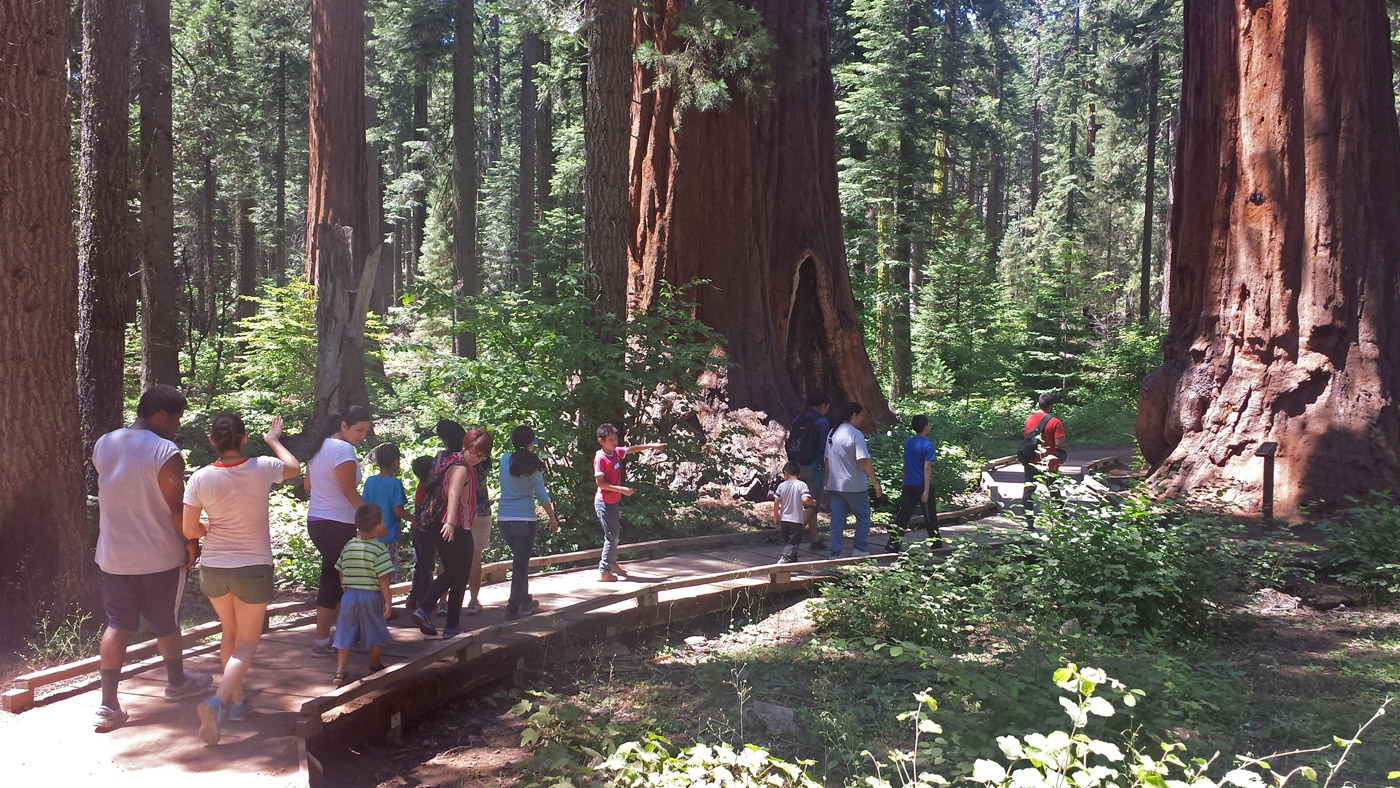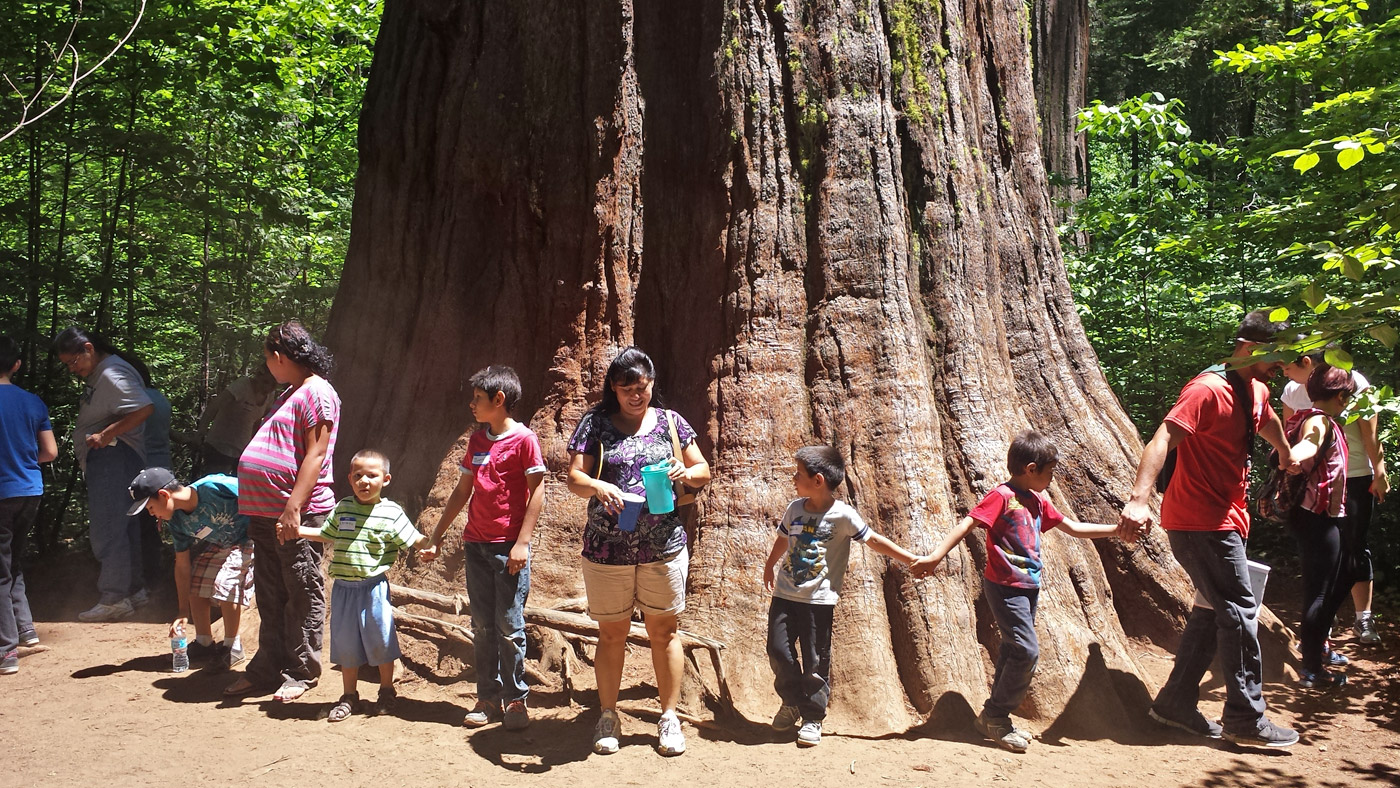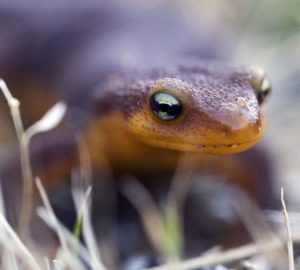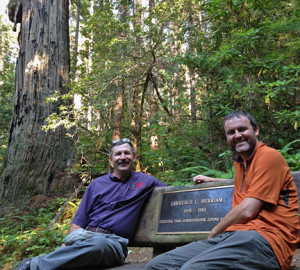I was born in a small rural town in the state of Nayarit in Mexico, where the “outdoors” was all around—outside. My memories of that time include playing in the river, running on dirt paths, and walking with family into the foothills to pick pitaya and guamuchile fruits.
Migrating at the age of eight to the United States added new kinds of memories and stirred up thoughts about nature and this idea of the “outdoors.” Growing up in California’s Central Valley, some things were certainly as different as some were familiar. The agricultural surroundings reminded me of the milpas (cornfields) of home, and the remate (swap meet) brought back memories of the mercado (market) and its food, music, and colorful visuals.
The difference was the feeling of living in a suburban neighborhood. Beyond going to the local city park, we had to travel to get to the outdoors, the closest of which was a regional river park. There were no longer pitayas and guamuchiles, but the nearby surroundings were not radically different from those in my hometown in terms of topography.
That is, until I saw the giant sequoia for the first time.
This moment came as I was also taking in the idea of a park as a protected landscape. Visiting the city park was highly recreational, between eating carne asadas and playing “bolibol” (volleyball). Visiting a protected landscape in the form of a state park was a different frame of mind and experience—one that I think is easy enough to understand from a middle-class Anglo background, but not always as easy from a low-income, immigrant Latino, working-class existence. That is not to say that it makes us ignorant, unappreciative, or unable to have that frame of mind; I say it to stress that we all come from different starting points. It also doesn’t mean that there aren’t parks as protected landscapes in Mexico—it just means I had no awareness and experience with that where and how I grew up.

Thus, I hold an early memory as an elementary school kid from the Central Valley visiting Calaveras Big Trees State Park and seeing these gigantes (giants), wondering how these trees grew so big and why I did not see them where I lived in the flatlands of the valley. “¿Por qué tan grandes y por qué aquí?” (Why so big and why here?) Many years later I would gaze into the giant sequoia groves in Yosemite National Park and still wonder that same question: “Why are these big trees here?” And many years after that, I would see the giants at Sequoia and Kings Canyon National Parks and the coast redwoods of Big Basin Redwoods State Park, Muir Woods National Monument, and Jedediah Smith Redwoods State Park.
Embedded into those experiences was the idea that these trees were special, different from other trees, and they needed protection. But part of it felt like going to a museum—I could admire what I was looking at, but needed to keep a respectful distance. It was something to go see, an entity separate from myself.
As an undergrad, I took migrant children on outdoor experiences. I recall, as we passed through a redwood grove at Big Basin Redwoods State Park, how the expressions on the kids’ faces mirrored my own when I was that age. I had read about the trees and knew enough information to answer any questions the kids had. But instead of sharing facts, I asked questions: “Did you know about these trees?” “How do you think they got this big?” “Why do they need to be in parks?” “How do you feel being among them?” “What would it be like to come with your parents here?”
To this day, when I walk among the giant trees, I first feel the awe of the experience before trying to understand the ecology and what information I can recall—simply put, I have an emotional reaction before a rational cognitive one. That’s what these trees first inspire in me: the magical realism of Latin American literature. It’s not that I don’t understand and don’t connect with the science, I just enjoy being able to have all these additive effects.

Yes, we should learn about how to protect and conserve forests, along with the fascinating information we have codified in books and interpretive displays. But first and foremost, we should simply experience the magic of being there, opening up the wonder and imagining the world these trees have lived through. We need to feel that connection. Protection and stewardship of the ecological landscape as well as the emotional one—of the trees themselves and our experiences in relation to them—still depend on us.
This circles back to my memories, mis recuerdos, and the dreams I have about what the future holds for these special trees in the face of climate change and its causal threats of drought and wildfires. What about families like mine when I was growing up? Will they connect to nature in the same way? Will they care? Equitable access to the outdoors continues to be needed to make sure they do.
I do not visit a park just for something to go see, for objects on display. Among giants, I connect with myself in mind and spirit. I let my imagination wander as I start to also think about the ecology and the policy entwined in the trees’ past and future existence. I take in the sense of what it is like to live according to such different time scales, and what it means to need the trees as they need us. It’s a restorative moment; a window into what was and how the future of what I see rests in our hands and in our ability to appreciate such natural gifts. I want all kids and families, especially those that grew up like me, to have this experience.


